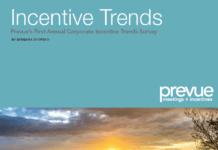 Here’s how to grow your network and build your personal brand on LinkedIn.
Here’s how to grow your network and build your personal brand on LinkedIn.
While there are great applications for our industry on Facebook and Instagram, I find most of the professionals in our industry hang out on LinkedIn to connect with like-minded individuals. Connecting with others and starting a relationship is easier to do on LinkedIn versus sending a Facebook friend request.
However, some LinkedIn connection requests can really stand out, while others fall flat.
Here are 7 tips for growing your LinkedIn network and your personal brand:
1. Send a personalized connection request message—When you are growing your network by sending connection requests, ensure you personalize the message that accompanies your request. This could help you stand out amongst dozens of requests. Whether someone is an influencer or they are weary of connecting with everyone, a personalized invite will capture their attention. Let them know why you’d like to connect with them, or try one of the following:
• Mention where you first heard of the individual—Did you meet the individual at a networking event, or perhaps heard them on a podcast or in a Clubhouse room? Or perhaps their thoughtful comment on a post caught your attention? Reference where the individual and their content caught your eye to create some common ground and reason for connecting with you.
• Reference common connections—Do you have mutual professional connections or colleagues, or thought leaders that you like to follow? Ensure you reference these common connections as a way to build the bridge of trust towards your new connection.
• Reference common groups or interests—If you belong to the same LinkedIn group, mention the group and ask about their experience within the group. Bonus points if you reference a discussion from the group that you feel your new connection may find value in.
2. Provide value—You can really stand out by giving your potential connecting something of value—a resource, a website link or another connection. It can reference the work that they do, or perhaps another interest they have as evident in their profile. The valuable insight is not in exchange for anything, but rather given freely and without expectation of a return gift. The same value-based contribution can be given to those that connect with you first.
3. Don’t sell—As with all social media platforms, LinkedIn is not where you sell your product all the time, especially to those you are trying to connect with. LinkedIn is where you start selling you and your personal brand. The hard sell will not work here, especially in the initial connection request invitation, and you’ll lose interest from your new connection if you try to feature-dump your product 24/7. Rather, use LinkedIn as a place to build trust in you as their advisor, and in your product as a solution. When the time comes for the sell, you will have built up some credibility and trust, and the transition will be much easier. Make the connection request about them, and less about you and your product.
4. Like, share and comment on their posts—Engage with your 2nd- or 3rd-degree connections by engaging in their content before you send a connection request; this will increase your visibility with the connection tenfold. They will see your name and your comment prior to the connection request, thus making the request more warm in nature. Thank them for the content in your connection request, and post a thoughtful comment or ask a thoughtful question in return.
Engaging in other comments also increases your visibility with other members of their network. Go beyond the “like” and the “great post,” and provide your thought leadership into the discussion to increase the likelihood of them accepting your request.
5. Engage with those that engaged with your content—Your own LinkedIn content could have received engagement from like-minded professionals who are not necessarily 1st-degree connections. Dive into your own content’s engagement to see who’s hanging out, they could become great connections!
6. Tag your 2nd-degree connection when you see like-minded content. If you are aware of your 2nd-degree connections’ areas of thought leadership, tag them into discussions posted by others on LinkedIn. Your tag will end up in their notifications, and make your connection request more relevant. Remember to only tag content that you know they would find interesting or valuable. You don’t want to come across as spammy. Be selective to what they would find of value.
7. Don’t forget to nurture your advocates—Extend invitations to those that have engaged on your content, and nurture them to find other like-minded individuals that may find value in your future content. This is a great way to find communities to help grow your personal brand.
Check out my LinkedIn Reboot Guide for easy tips on how to engage on the world’s most popular (and growing!) professional platform and here’s to growing your network and your brand in 2023!
Leanne Calderwood, CMP is one of the hospitality industry’s most preeminent LinkedIn experts, and one of Canada’s top voices in the meetings and events industry.










